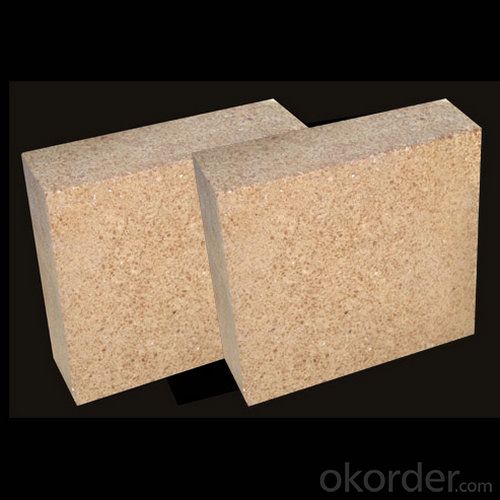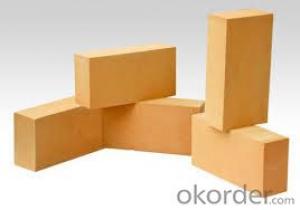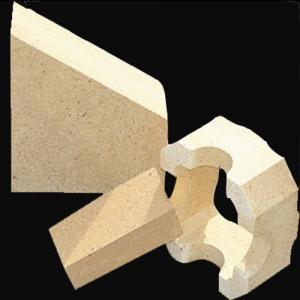Fireclay Brick for Blast Furnace and Hot Blast Furnace
- Loading Port:
- Tianjin
- Payment Terms:
- TT OR LC
- Min Order Qty:
- 1 m.t.
- Supply Capability:
- 20000 m.t./month
OKorder Service Pledge
OKorder Financial Service
You Might Also Like
Description of fireclay bricks
CMAX fireclay bricks are made from clinker clay. The alumina content ranges from 36% to 48%.
Features of fireclay bricks
1. Resisting high temperature
2. Great bulk density
3. Low iron content
4. Good eroding resistance
Applications of fireclay bricks
CMAX fireclay bricks are commonly applied in blast furnace, hot blast furnace, teeming ladle, glass furnace, etc.
Specifications of fireclay bricks
FIRE CLAY BRICK---ZGN42
Refractoriness (℃) 1750
Bulk Density (g/cm3) ≥2.3
Apparent Porosity (%) ≤15
Cold Crushing Strength (Mpa) ≥58
Refractoriness Under Load (T0.6) (℃) 1450
Reheating Linear Change (%) 1450℃×2h
0~-0.2
Chemical Composition (%)
Al2O3 42
Images of fireclay bricks
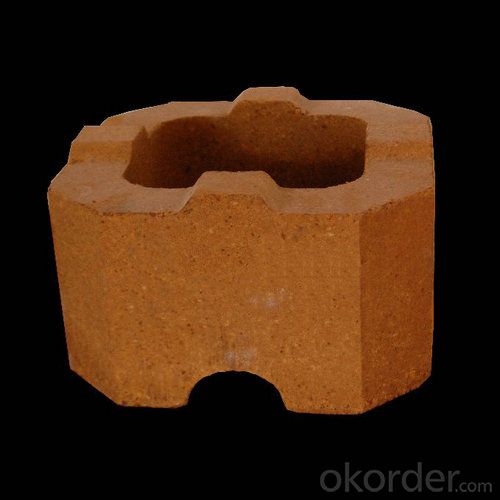


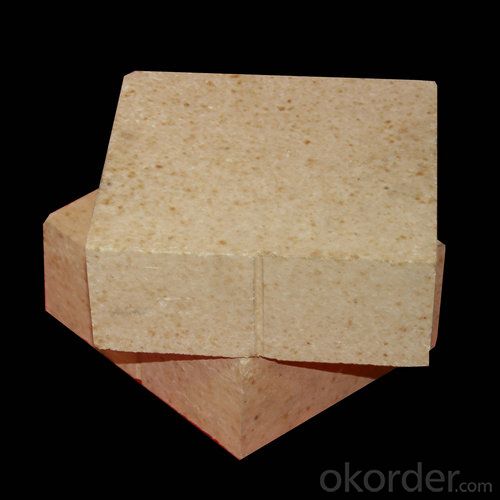
FAQ of fireclay bricks
1. Which products do you have?
We have all kinds of refractory brick, castable, mortar, cement, ceramic fiber products, etc.
Or you could browse our products to choose what you need.
2. Can you give me a general idea of the specification and technical data of your products?
CNBM offer a range of refractory and insulation products. We provide refractory bricks, monolithic refractories as well as ceramic fiber products. And On your given shapes, drawings or description, we are producing refractories with all sizes and shapes, resistant to temperature from 800 °C till 1800 °C, using various machines and equipments for cutting, grinding, drilling, polishing, shaping processes.
Every refractory product by CNBM is of superior quality. Lesser refractory products can not approach. CNBM utilizes proprietary testing methods, testing for chemical content, density, apparent porosity, cold crush strength and modulus of rapture. With stringent quality control, you can count on CNBM products to exceed refractory industry standards and your expectations.
3. Can you give me a brief introduction of the application of your products?
We are mainly specializing in the refractory materials in iron and steel, cement, glass, ceramics, petrochemical, electric power Industry, etc.
4. If I need your offer, what information do you need?
In order to choose suitable products, it will be appreciated to provide us the information, such us specification, technical data, order quantity, products application etc.
If any question, please contact us freely.
- Q: What types of building blocks do you have?
- The commonly used shapes are mainly divided into hollow bricks and perforated bricks. In particular to the green landscape construction, decoration materials, building construction, there are many such as: ordinary brick, lime sand brick, sintered shale brick, porous ceramsite concrete permeable brick, lawn brick, pervious brick, hollow glass brick, ceramic tile ground, refractory clay, concrete block wall, floor tiles, solar LED lamp, floor tile dry spray the rubber brick, grass planting brick, brick, split brick, road brick.
- Q: how heavy are boiler of six tons plus refractory bricks?
- The total weight is about 60 tons, 6 tons of bulk boiler steel, insulation materials, sealing materials, refractory material
- Q: does the furnace wall use refractory bricks to keep the heat? Or use the insulation material to keep heat ?
- The furnace arch and the furnace wall are all refractory bricks, and the refractory brick is a kind of thermal insulation material!
- Q: do the used refractory bricks pollute the environment?
- the main pollution of refractory brick is coal gas pollution in the process of burning , it can be recycled to produce aggregate, waste brick has no pollution.
- Q: How to wipe off the white paint on the refractory brick (red).
- Cover the wall gap with tape. . Then paint the bricks. Finally, tear the tape off. .
- Q: How about clay bricks?
- Fired ordinary brick is one of the indispensable building materials in production and life, but its quality is not good or bad in the absence of professional equipment. Now to introduce a little trick:According to the main raw materials for clay brick, shale, coal gangue and fly ash brick. Mainly in our local clay brick. According to the compressive strength of weathering resistance of radioactive material and qualified brick, according to the size deviation, appearance quality, efflorescence and lime burst into superior products, first-class products, qualified three quality grades.
- Q: Can thick steel plate be used instead of the furnace inside the refractory brick?
- It depends on the temperature. The steel plate is a kind of heat conduction material which hasn't heat insulation, which should be based on the working environment.
- Q: what is application of high alumina refractory brick?
- reverberatory?furnace 1, close to the neutral refractory, but because mullite crystallization has not formed the network organization, so the load softening temperature is not higher than silica?brick. the refractoriness of high alumina brick is higher than fireclay?brick and semi-silica brick, mainly used in blast furnace, nozzle brick,etc. it is up to 1790 C~ 1750, can resistance to acid slag and alkaline slag erosion. hot blast furnace, blast furnace, high alumina brick are widely used for producing open-hearth?furnace regenerative bricks, because it contains SiO2, low impurity content, which belongs to high-grade refractory materials, electric furnace. 2, plug head used in pouring system . In addition. 3, because high aluminum products contains more Al2O3, forming less fusible vitreous body, so the high load softening temperature is higher than clay brick. because rotary kiln lining, slag resistance of high alumina refractory brick contain more Al2O3, so the ability of anti alkaline slag is weaker than anti acid slag. so it has a wide range of application. high alumina refractory brick due to the following performances
- Q: What is sintered non clay brick?
- Unfired bricks are bricks used to build walls relative to sintered bricks.
- Q: Do slag bricks have clay bricks strong enough?
- Clay bricks you mean should be red bricks burned out of the fire.
Send your message to us
Fireclay Brick for Blast Furnace and Hot Blast Furnace
- Loading Port:
- Tianjin
- Payment Terms:
- TT OR LC
- Min Order Qty:
- 1 m.t.
- Supply Capability:
- 20000 m.t./month
OKorder Service Pledge
OKorder Financial Service
Similar products
Hot products
Hot Searches
Related keywords







